What Distortion is Actually Doing to Your Mix
Understanding distortion can be a difficult task. Especially when multiple types are available, and can go under a few different names.
Couple that with the reach of distortion, be it in our compressors, emulators, equalizers, and even in the make up of our DAWs, and distortion can become daunting.
That’s why it’s helpful to have a visual representation of distortion. One that clearly shows what is occurring to your signal when you use a distortion plugin.
Use a sine wav and a frequency analyzer to see firsthand, how distortion generates harmonics, as well as affect existing ones.
Follow along to see how such a test can be performed, and then use this test on your go-to distortion plugin.
Setting Up for a Frequency Analyzer Test:
Step 1: Generate or download a sine wave. Keep in mind that sine waves aren’t the most pleasant to listen to, so a mid range frequency is the best course of action.
Step 2: Insert your favorite distortion plugin on your sine wave track, and enable your distortion settings.
Step 3: Insert a frequency analyzer on your output channel. Izotope’s insight analyzer is a great choice that offers multiple display options.
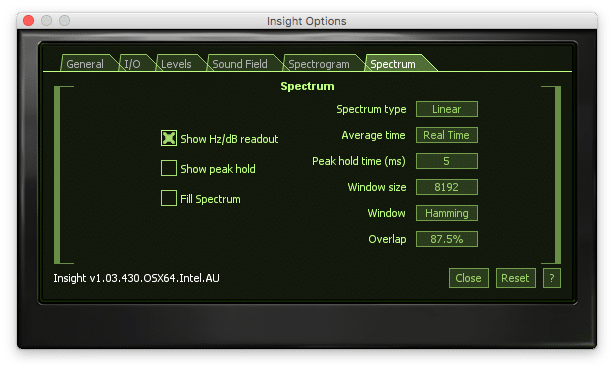
A higher window size, paired with a low peak hold time, results in a very detailed analysis.
Step 4: Adjust your distortion settings. Observe the changes created in the frequency spectrum analyzer.
Tape Distortion:

Increasing the input and decreasing the output results in a tape overdrive effect.
Tape distortion creates primarily odd harmonic distortion. The even harmonics are still present, but the odd harmonics are dominant.

Notice that the fundamental, the 3rd, 5th, 7th order harmonics are the most prominent.
This has a somewhat ordered and pleasant sound, making the original source defined and present. When using the highest settings, the original sound is still somewhat intelligible.
Bit Depth Distortion:
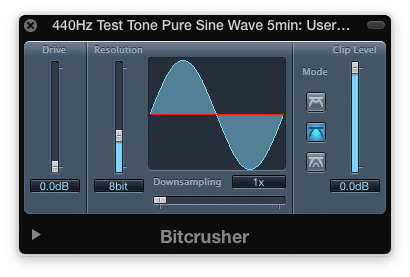
Degrading the bit depth causes quantization distortion.
Quantization or bit depth distortion is less ordered than tape, and can lead to the perception of noise. Whereas the tape distortion and others like it can be perceived as ordered and pleasant, bit depth distortion is far less pleasing to the ear.
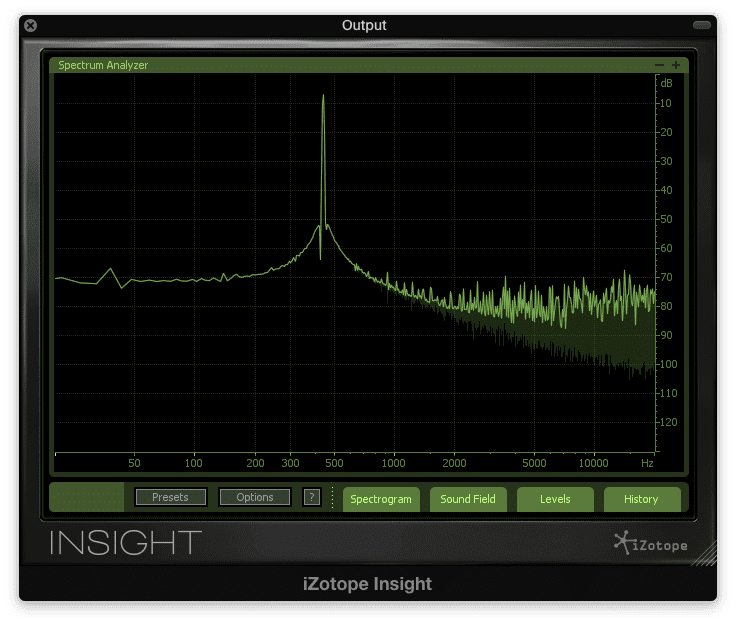
Harmonics generated from bit depth distortion are primarily located in the higher frequency range.
Fun Fact: This is the type of distortion dithering attempts to mask with high pitch frequencies.
Phase Distortion:
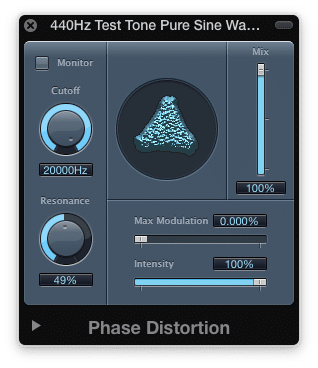
Altering the phase alignment of the sine wave or signal, alters the shape of the waveform.
More chaotic is phase distortion. By altering the shape of the sound wave through shifting phase alignment, phase distortion results in a multitude of harmonics.

Notice that the harmonics generated are collectively louder than the fundamental. This indicates a signal so distorted it's no longer recognizable.
The greater the distortion, the more seemingly random and noisy the distortion becomes. The sound typically isn’t used in a mixing setting, except in lo-fi applications. At it’s highest levels of distortion, the original signal becomes unintelligible.
Tube Distortion:
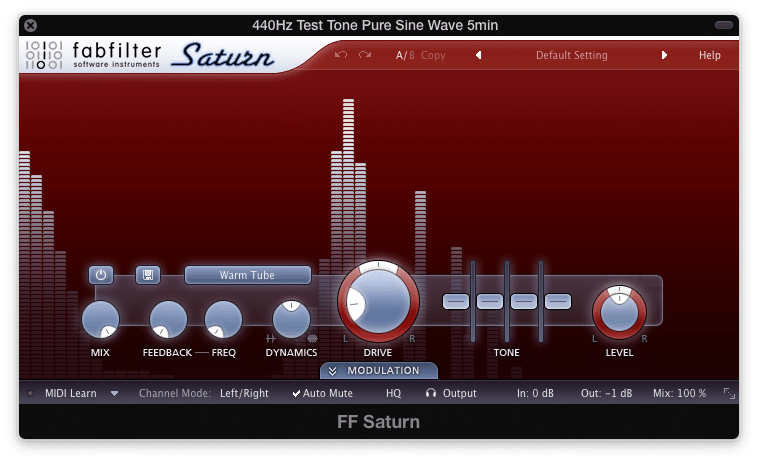
Increasing the drive increases the amount of harmonics generated.
Tube distortion generates harmonics that are typically characterized by a warm and pleasing sound.
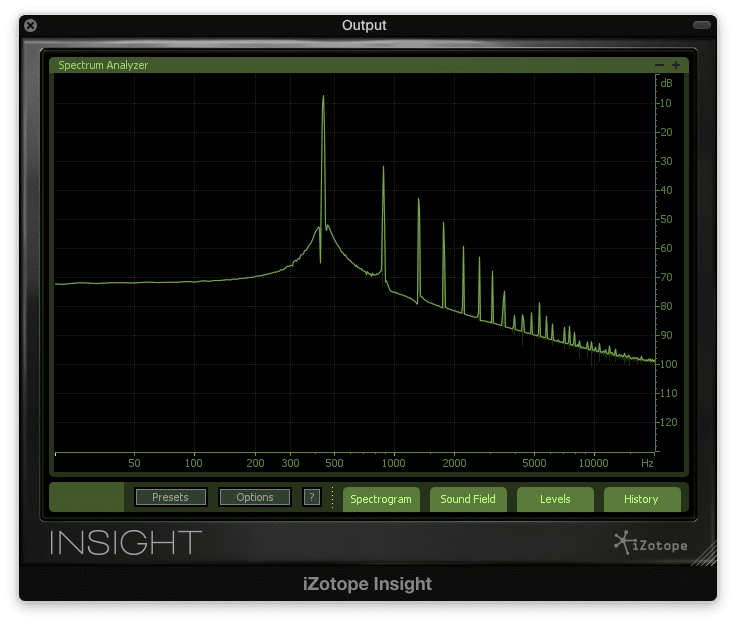
Notice that tube distortion generates harmonics that decrease in power linearly.
At lower levels, tube distortion generates a dominant second order harmonic, that adds presence and fullness to the original sound source. Like tape distortion, even at the highest levels of distortion, the original signal is still intelligible.
Harmonic Excitement:
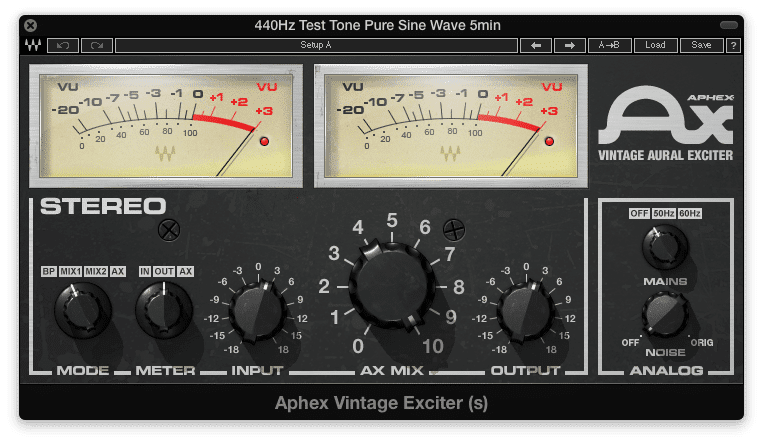
Even with the maximum AX Mix settings, an exciter will not generate harmonics.
Similar to distortion, exciters work by accentuating harmonics. Unlike distortion, an exciter only amplifies existing harmonics, not generate new ones. Typically, exciters are best used in conjunction with distortion, as this allows for a greater number of harmonics to be excited.
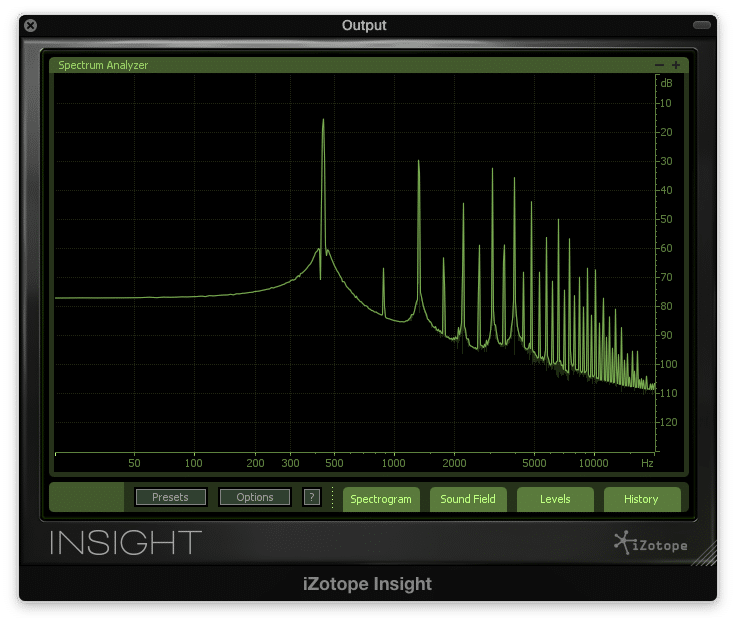
This shows the same tape distortion settings from before, but in combination with harmonic excitement.
Conclusion:
Distortion can become complicated, but having a visual representation of the harmonics it creates is definitely helpful. Although the results from the test above sum up the majority of distortion types, there are still more unique and diverse plugins to test.
Next time you’re curious what a specific distortion plugin is doing, use this frequency analyzer test. Be sure to share your results in the comment section below!
What do you use for distortion, and what does it do to your signal?




